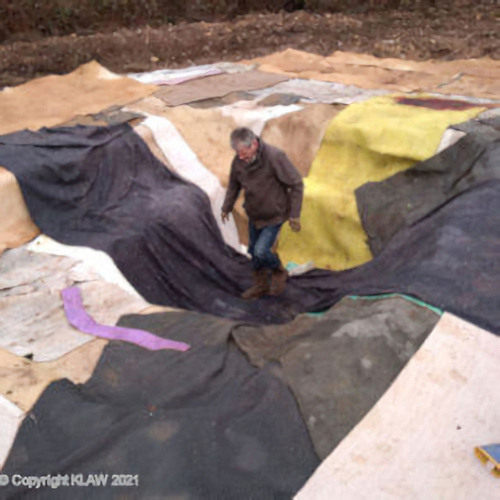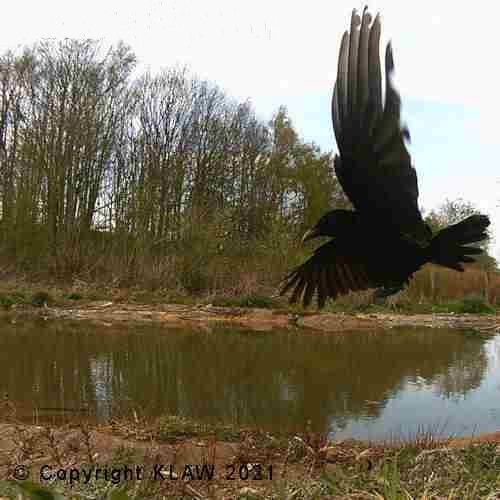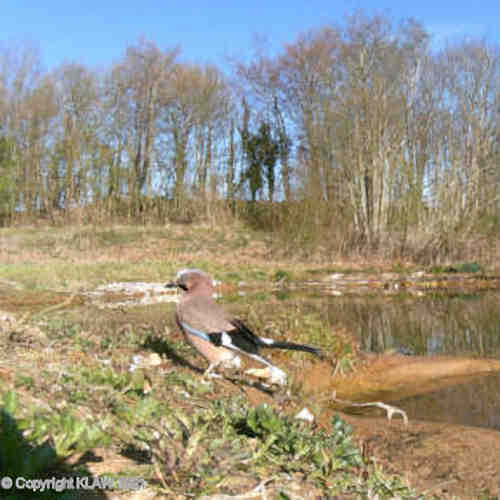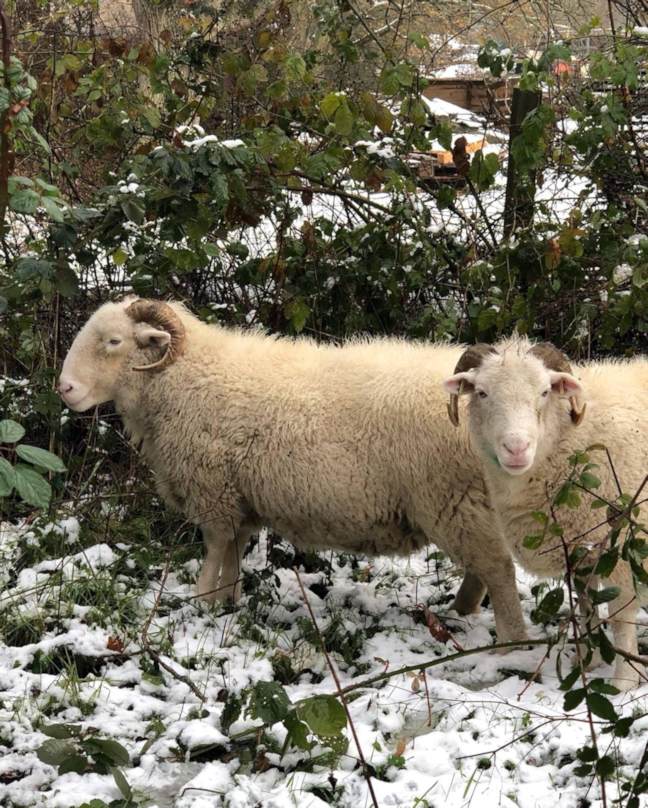Wildlife Ponds
Ponds, streams and bogs all provide hugely important habitats for a wide range of wildlife. Even a small pond in a
garden can enrich the range of wildlife within yards of your home. A ‘pond’ can be anything from a large bucket
buried in the soil, a dew pond brought back to life through to a deep pond covering many square metres.
Starting Small
Our first pond at Mystole Orchard was little more than a small hole in the ground, about half a square metre in area
and 40cm deep in the middle. This sits in a vegetable plot and attracts a wide range of wildlife: birds, dragonflies,
pond snails, water beetles and toads. We have trail camera images of a tawny owl washing with great vigour, and we
like to believe, great pleasure. Sometimes there are so many birds they are almost bumping into each other. This small pond,
once it was about two years old, had dragonfly nymphs that hatched out sucessfully. The only disadvantage is that we have
to net most of the vegentables we grow. The birds that visit the pond assume we are also growing crops to provide them with food.
Bigger Ponds & Lessons Learned
At Mystole Orchard we went on to build bigger ponds. In the process we learned how not to do it as well as how to do it.
Some basic tips can make a big difference to the success of your pond.
Mystole Orchard is mainly clay with flints and although the clay can become a quagmire when wet, the flints mean the water
drains relatively quickly. We found that a strong liner is essential.
We'd recommend using a thick underlay to protect the liner from sharp stones, especially if you live in an area with many
flints in the soil. Old carpets and carpet underlay are excellent for this. They can usually be obtained from a carpet shop
either as remnants or carpet thrown away when new carpet is fitted, (but check for staples and tacks used from old carpet fitting).
Lenleys of Canterbury were very helpful to us, allowing us to have many square metres of carpet and underlay
We'd advise making sure the pond liner is thick enough to not be damaged by the feet of any animals (such as a fox or deer) that
walk into pond. We used 1mm thick butyl and have found it works well for larger ponds.
We/d also advise filling a pond with rain water and also store rainwater in old barrels in case you need to top up the water level.
Easiest and best of all is water from a borehole, if you have acces to one.
Be aware, we suggest you don't use tap water. It has chemicals
added for human health but they can unbalance the pond plant growth,
leading to rapid growth of pond weeds that can choke other plants.

Carpet Underlay In Place

A Pond 12 Months After Being Dug

A Jay Enjoying A Pond Edge
We put some soil back into the pond when it was lined, to help plants and pond creatures become
established. We were advised to not put topsoil in. Even the worst top soil
usually has too many nutrients for a wildlife pond. When the pond is being dug out save some of
the soil from the deepest part of the for putting back. We used topsoil to go round the edges,
being careful to not put it too close to the water when the pond is full.
Lessons learned? The biggest was probably not realising just how important
it was to get the levelling exactly right, unless you are lucky enough to be putting a pond
into completely flat ground. Even after repeated checks on the levels we found the edges
needed adjusting once a pond was part filled with water.
A lot of very cold sticky mud had to be either added or removed from the pond edges,
until we had the gradual slopes best for a wildlife pond.
While doing this we also introduced irregular edges and shallow "lagoons",
both of which makes the ponds much more attractive to wild life and, we believe, to humans.
Our next big lesson learned was also with our first large pond. Once it was established we realised
how important mud - so sticky and unpleasant to deal with when we were finishing the pond - is
to many forms of wildlife.
Mud is essential to many insects and birds for their nests. Once we realised this we put a
30-60 cm wide strip of thin polypropylene pond underlay round the pond edges, on top of the
butyl liner, instead of below it. On top of the polypropylene we put a thin layer of clay soil.
Because one edge is in the pond water and one edge under the clay soil the polypropylene acts
as a wick. The water travels along the polypropylene, under the clay layer and keeps the pond edges
slightly damp and more like a natural pond.
Don’t worry if the level of the pond rises and falls – this is what
happens in nature and helps insects and birds who need access to mud.
The only time you should be concerned is if the level drops so low that all the
pond creatures and plants are exposed and die.
This can generally be avoided by making sure there is one part of the
pond that is a metre deep, gradually sloping up to the pond edge.
This is shown in the photo of the pond under preparation, with old carpets as the underlay.
We'll be adding more later about bogs and streams.
Jenny and Keith Dugmore







